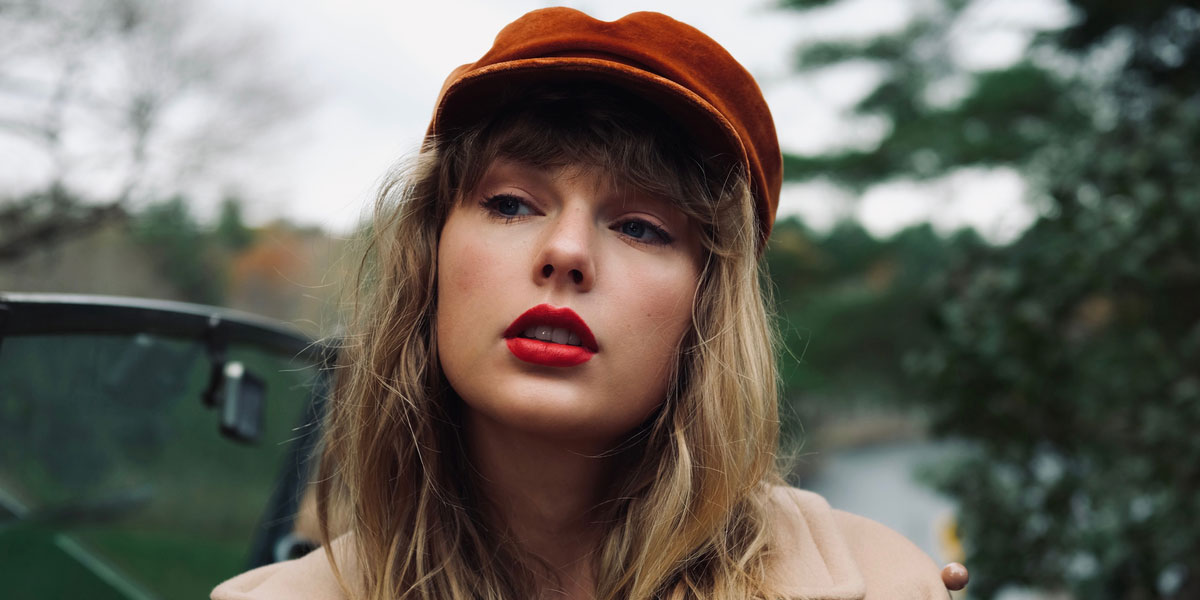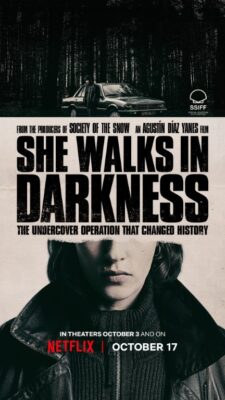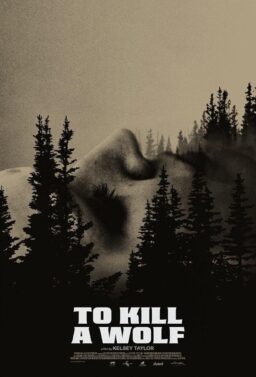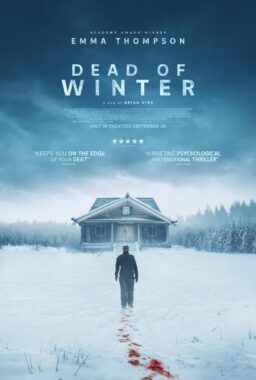There’s no shortage of filmmakers who have cut their teeth on music videos before pursuing feature-length films—Michael Bay, Spike Jonze, Hype Williams, David Fincher, and Autumn de Wilde to name just a few. This year’s Toronto International Film Festival hosted a conversation with a budding music video director looking to make that jump into features. Taylor Swift is one such filmmaker with shorts that point to a long, promising career behind the camera.
Swift, who has firmly established herself as a household name in the worlds of country music and pop, made waves in the pop culture landscape last year when she announced the release of “All Too Well: The Short Film,” an 11-minute short starring Sadie Sink (as Her) and Dylan O’Brien (as Him) that served as a visual companion to celebrate the release of Red (Taylor’s Version), the second of several re-recorded albums in Swift’s catalogue.
Though Swift’s fans were surprised by the new 11-minute version of Swift’s standout Red track, and the sudden release of an accompanying music video nearly 10 years after the song’s original release, the filmmaking community was in a flurry for an entirely different reason—the unexpected (or perhaps, previously unacknowledged) brilliance of Swift’s direction. Nearly a year after the short film’s debut—garnering near-universal acclaim and sparking heavy online debate as to the real-life story behind the infamous red scarf—Swift went to TIFF earlier this month to screen “All Too Well” for the first time in its original 35mm print and to give insight into her filmmaking process.
It was immediately apparent when listening to Swift talk about the behind-the-scenes work of “All Too Well” that she has a palpable passion for filmmaking and takes genuine pride whenever her reverence for the industry or homages to other directors are recognized. This was the case during Swift’s conversation with TIFF CEO Cameron Bailey, which was peppered with small glimpses into Swift’s relationship with filmmaking and film as an art form.
Swift’s filmmaking career has run more or less parallel to that of her music, having edited home videos for her songs (“Christmas Tree Farm”) and also co-directed her music videos (“Lover,” “You Need to Calm Down”) since 2008. But after years of writing treatments and storyboarding, Swift’s first big solo turn in the director’s chair came via the tongue-in-cheek gender-bending music video for 2020’s “The Man,” which sees Swift don a suit and heavy prosthetics in a not-so-subtle jab at gender inequity in the workplace. Pulling visual inspiration from the bustling offices of “The Wolf of Wall Street,” “The Man” has a distinct sense of humor frequent in much of Swift’s work that points to a self-awareness and levity juxtaposed by the depth of her dramatic lyrics. From man-Taylor peeing glitter all over her older album titles to an endless hallway of gloved hands waiting to pat her brutish protagonist on the back—ending the video with a trophy wife gleefully marrying man-Taylor for his money—there’s a wit (bordering self-depreciation) that makes Swift’s dramatic visual storytelling compelling without feeling overwrought.
Though lighthearted humor and joyful rebellion may be the thru line for many of the music videos Swift directed off Lover, her subsequent entries, Folklore and its sister album Evermore usher in a more mature, ruminative era of Swift’s music and videos. The video for 2020’s “Cardigan” sees Swift bathed in warm candlelight from the flickering fires of a cobblestone cottage, before discovering a fantasy world pulled from the pages of “The Chronicles of Narnia.”
Where “The Man” played with visual humor in short, punchy sequences to emphasize the infuriating nature of the double standards that plague Swift’s career in comparison to her male contemporaries, “Cardigan” takes a more traditional narrative approach in its cinematic language, honoring Folklore’s inspiration from fairytales (during the TIFF Q&A, Swift cited influences of Guillermo del Toro’s “Pan's Labyrinth” and “The Devil's Backbone” on the album). There’s a cinematic scope and tone to “Cardigan” that elevates the video beyond conventional expectations of a product placement-laden pop video, slotting it squarely in the category of a short film set to music.
For the visual language of “All Too Well” and the film’s melancholy romance (brought to life by an electric dynamic between Sadie Sink and Dylan O’Brien), Swift looked to the heartbreak romance films of the 1970s: “Kramer vs. Kramer,” “Love Story,” and “The Way We Were.” Swift sought to channel the beautiful tragedy of watching two people clearly meant to know one another drift apart. Emulating the rawness of protagonist Her’s emotional devastation, Swift employs lingering handheld shots (courtesy of cinematographer Rina Yang) that emphasize not only the short’s grounded nature, but the aching youth of Her and how her age intrinsically drives a wedge between the doomed lovers.
Though a majority of their conversations are lost under the lyrics of “All Too Well,” Swift’s careful production design and lighting speak to the mismatched dysfunction of Her and Him’s relationship. Where His’ house is sterile, modern, and thoroughly “grown up,” swathed in cool blues and stark whites, Her’s room is lit warmly and blanketed in soft knits and familiar textures that point to a more innocent, youthful inhabitant. When we flash forward and see that grown-up Her’s new apartment is eerily familiar to His old place, there’s an unspoken tragedy in how his love (and heartbreak) has impacted Her, even after their relationship has ended—all told through Swift’s meticulous lighting and eye for production design.
More than anything, though, it’s Swift’s trust in her actors that’s so remarkable. “All Too Well”‘s most memorable scene features a single continuous shot as the two rip into each other in the wake of a tumultuous dinner party. Though the instinct may be to emphasize the volatility of their relationship with quick, jarring cuts, the unflinching persistence of the single take means the viewer is left with nothing to do but squirm and despair as we watch their relationship fall apart before our eyes.
Swift was incredibly gracious during her TIFF conversation to the many filmmakers with whom she worked in the early days of her interest in creative control of her music videos. Swift frequently cited Joseph Kahn as a valuable collaborator and mentor as she found her footing not just as the artist and star but as the driving creative force behind her music videos, and for helping her realize her passion for self-sufficiency and independence as a director. She also mentioned cinematographer Yang, who helped guide Swift in the search for the perfect film stock on which to capture “All Too Well.”
Though a wildly successful short would usually have a budding filmmaker immediately looking toward a feature project, the process is (understandably) not so simple for Swift, who has to juggle a blossoming career as a director with the not-so-inconsequential burden of being a pop superstar regularly touring sold-out arenas. But while Swift’s schedule may mean her film projects are once-in-a-while delights rather than a consistent body of work, Swift hinted in the closing moments of the Q&A that a movie—with the right script—does seem like the natural progression of directorial career. A feature-length film directed by 11-time Grammy winner Taylor Swift? Never say never.











